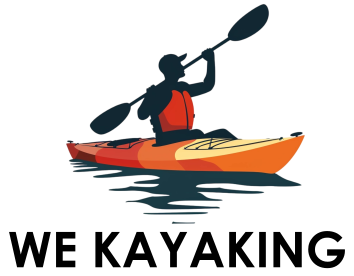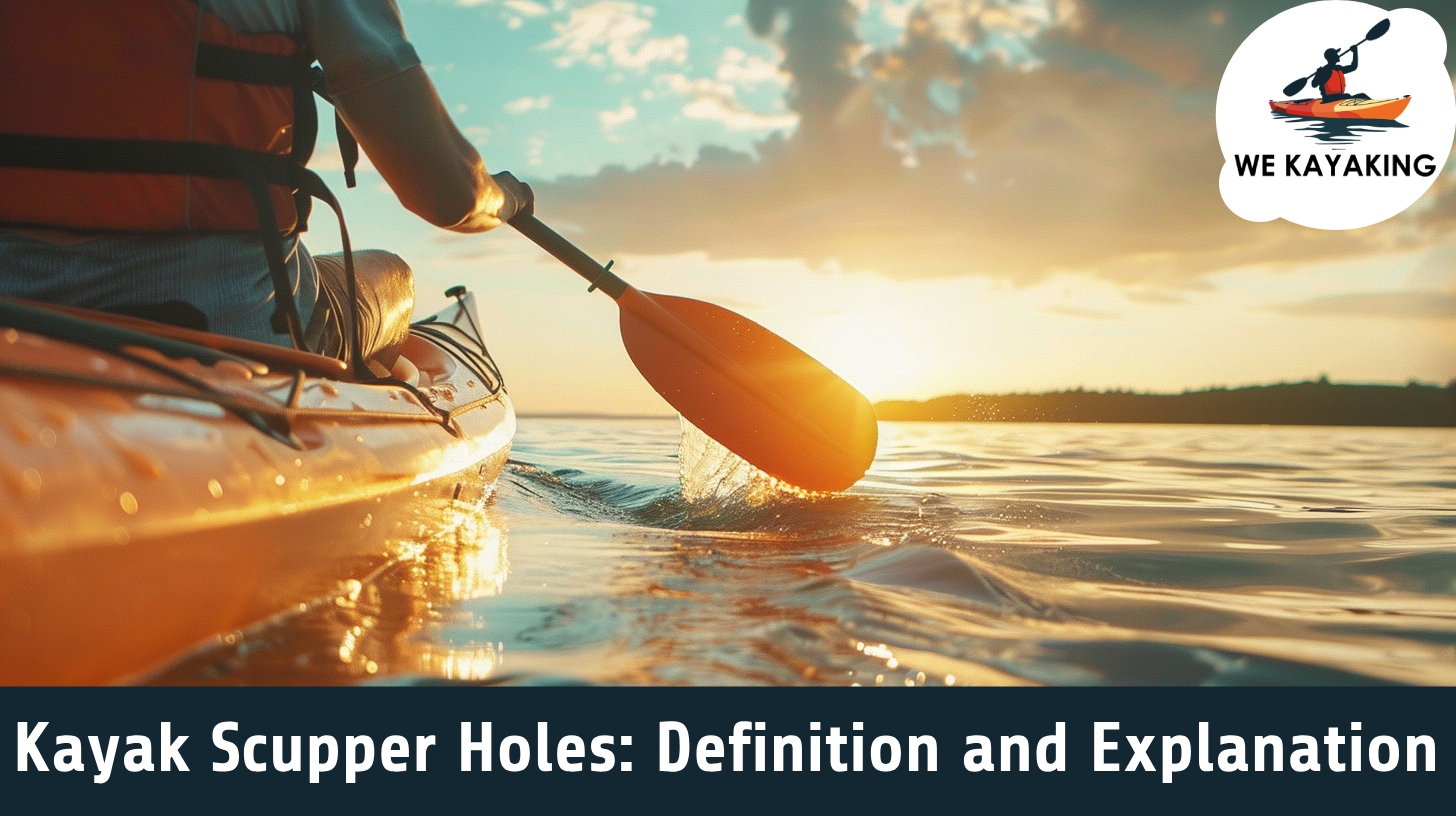
Kayak Scupper Holes: Definition and Explanation
Kayak scupper holes are openings in the hull of a sit-on-top kayak designed to allow water to drain out of the cockpit area of the kayak. These holes are strategically located in the kayak’s design to prevent water from accumulating on the deck.
These vertical holes connect the boat deck to the water beneath it and are strategically placed openings that allow water to flow freely in and out, facilitating efficient drainage and preventing the accumulation of water within the sit-on-top kayak’s cockpit.
Paddlers benefit from the self-draining nature of scupper holes. It ensures a buoyant and stable ride, while the design actively maintains a dry cockpit, even in diverse water conditions. These openings dynamically contribute to preventing swamping, enhancing comfort, and maximizing the overall paddling experience.
Table of Contents
What are kayak scupper holes?
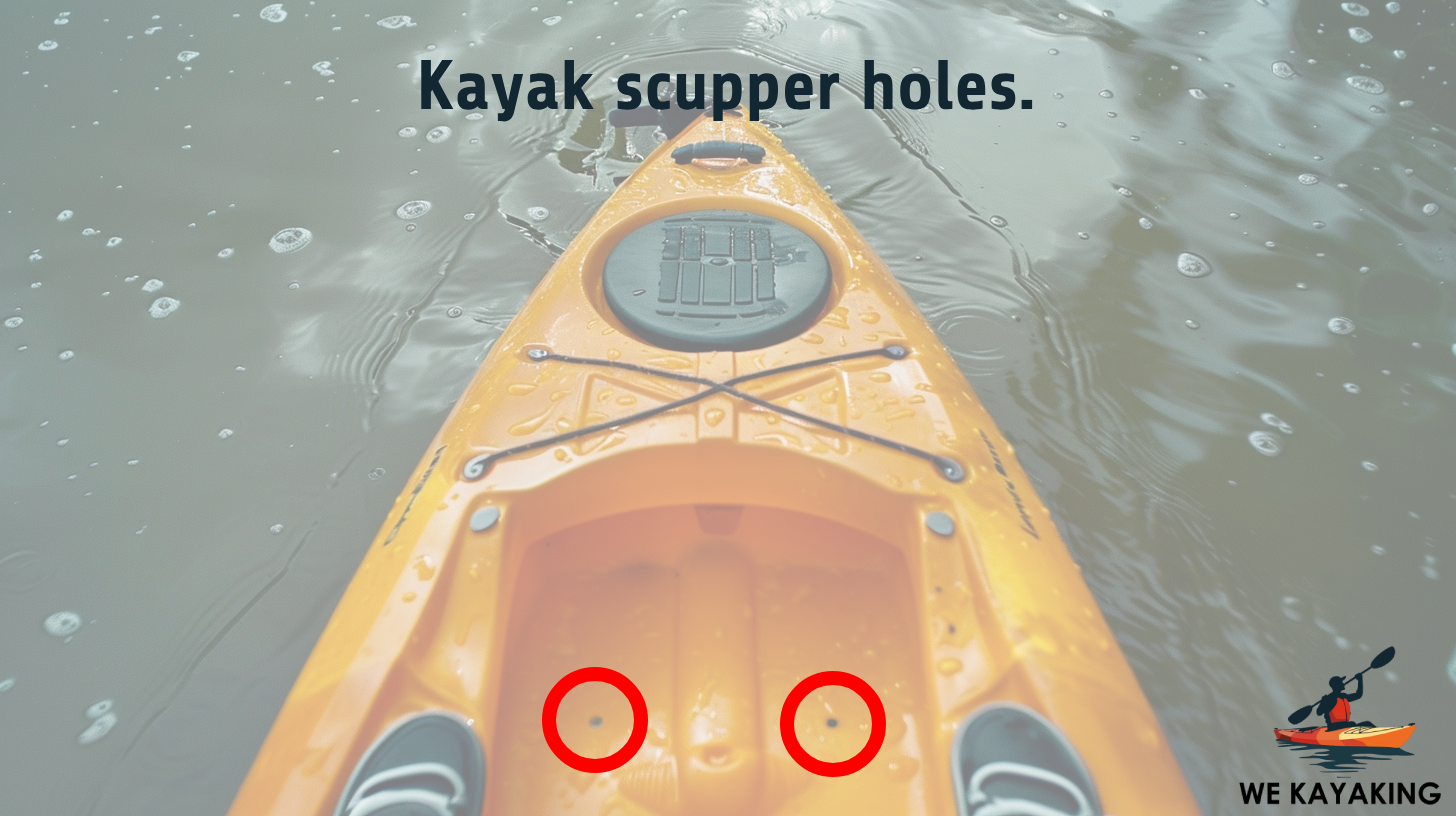 Scupper holes are deliberate openings found in sit-on-top kayaks. These holes allow water that has entered the kayak to drain out, rather than accumulating inside the boat. Having holes seems initially counterintuitive due to the concept of intentionally creating holes in a boat. However, their presence serves crucial design functions.
Scupper holes are deliberate openings found in sit-on-top kayaks. These holes allow water that has entered the kayak to drain out, rather than accumulating inside the boat. Having holes seems initially counterintuitive due to the concept of intentionally creating holes in a boat. However, their presence serves crucial design functions.
First, they contribute to the structural integrity of the kayak. Secondly, these holes double as effective drainage points, allowing water to exit the boat and preventing accumulation within the kayak, ensuring a drier and more stable experience for the paddler.
Scupper holes in kayaks typically appear as openings or cavities strategically integrated into the hull of the boat. These holes vary in shape, commonly circular, oval, or elongated slots, and they are designed to allow water to drain out of the kayak.
Scupper holes vary in size, and their dimensions impact both the drainage capacity and the overall aesthetics of the kayak. Smaller scupper holes are numerous, providing efficient drainage, while larger ones allow for faster water evacuation. Scupper holes are typically around 1.2-1.4 (3-3.5 cm) inches in diameter but range up to 6-8 inches (15-20 cm). The size and placement of scupper holes depend on the specific design and model of the kayak.
The exterior appearance of scupper holes often corresponds with the contours of the kayak’s hull, seamlessly blending into the overall design. Their location is generally strategic, placed in areas where water is likely to collect, ensuring efficient drainage and preventing the kayak from becoming waterlogged during use.
Some scupper holes come with additional features, such as compatibility with scupper plugs or valves. These accessories allow paddlers to customize the drainage system based on weather conditions or personal preferences.
What is the purpose of kayak scupper holes?
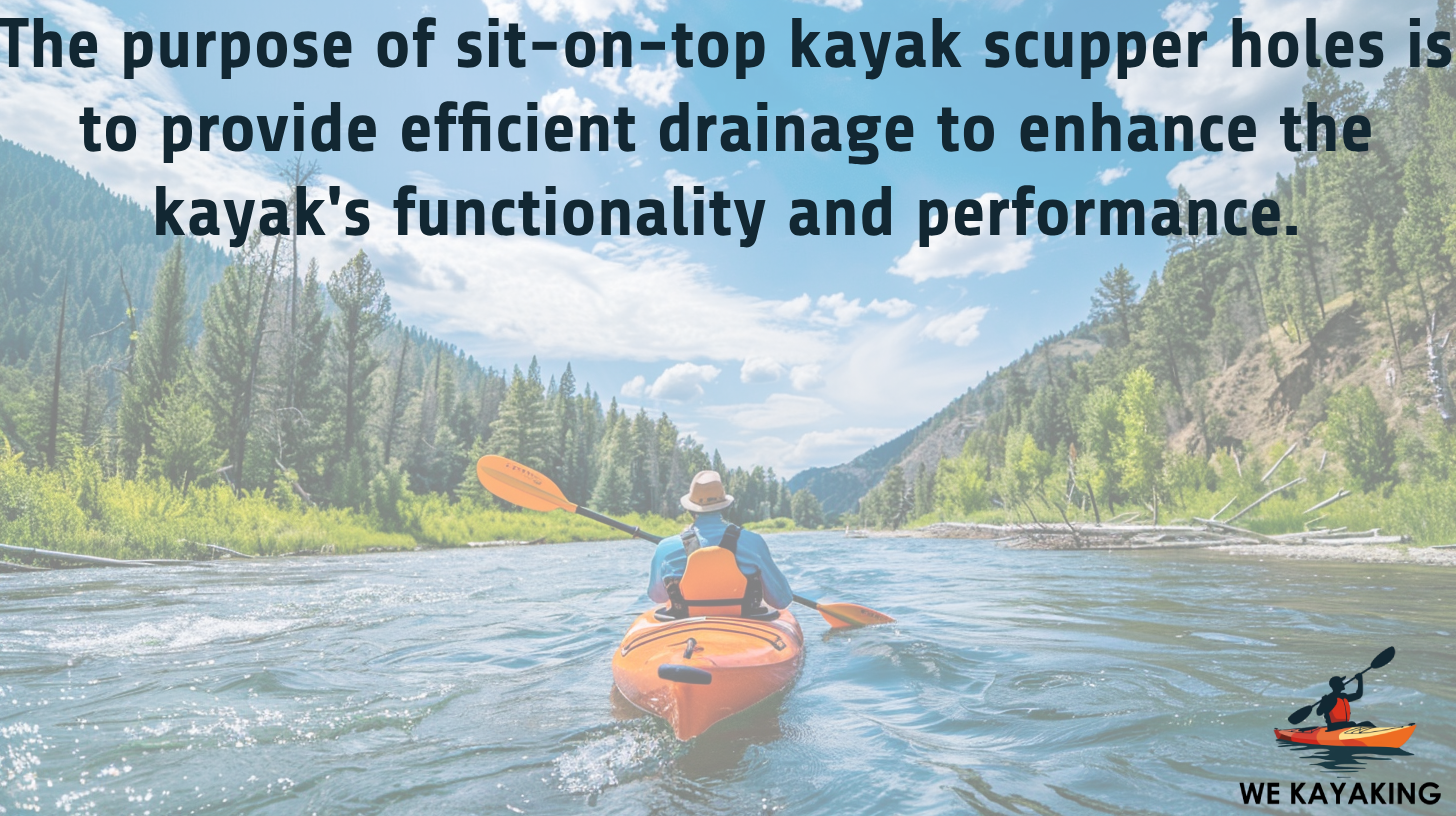 The purpose of sit-on-top kayak scupper holes is to provide efficient drainage to enhance the kayak’s functionality and performance. Since paddlers navigate various water conditions, scupper holes allow water that splashes onto the kayak’s deck to swiftly exit, preventing accumulation that will lead to swamping.
The purpose of sit-on-top kayak scupper holes is to provide efficient drainage to enhance the kayak’s functionality and performance. Since paddlers navigate various water conditions, scupper holes allow water that splashes onto the kayak’s deck to swiftly exit, preventing accumulation that will lead to swamping.
Beyond drainage, scupper holes contribute to the stability of the kayak, maintaining a lower center of gravity by preventing water pooling. This not only enhances the overall paddling experience but also promotes a sense of security for the kayaker. Additionally, the design of the scupper holes supports the structural integrity of the kayak, ensuring it maintains its shape and buoyancy.
The comfort of the paddler is also considered, as scupper holes help keep the seating area drier during water activities. Moreover, the adaptability of scupper holes is demonstrated by their ability to work in tandem with scupper plugs or valves, providing a means for tailoring the kayak’s features according to individual preferences or the prevailing weather conditions. In essence, kayak scupper holes are integral components that harmonize functionality, stability, and comfort in sit-on-top kayaks.
Do kayak scupper holes increase safety?
Yes, kayak scupper holes increase kayak safety. These intentional openings in the hull of sit-on-top kayaks play a crucial role in preventing swamping by allowing water to drain out efficiently. By minimizing the risk of water accumulation on the kayak’s deck, scupper holes contribute to buoyancy and stability, reducing the likelihood of capsizing.
By making the kayak easier to maneuver and less likely to become unstable from too much water, this design element improves paddlers’ overall safety, particularly in difficult or choppy conditions.
Do kayak scupper holes increase the stability of kayak?
Yes, kayak scupper holes contribute to the stability of a kayak. Scupper holes play a key role in preventing water from pooling onto the kayak’s deck, which helps maintain a lower center of gravity. This design feature reduces the risk of tipping or capsizing, especially in rough or choppy water conditions, making the kayaking experience more stable.
This self-draining capability ensures that the kayak remains lighter during use, as excess water is promptly expelled. The absence of retained water not only reduces the overall weight of the kayak but also eliminates the potential for sudden shifts in weight distribution, further contributing to stability. By allowing water to drain out efficiently, scupper holes enhance the overall stability of the kayak, providing a more secure and balanced paddling experience for users.
Are kayak scupper holes used for mounting additional equipment?
No, kayak scupper holes are not designed for directly mounting additional equipment. Scupper holes primarily serve the purpose of drainage, stability, and structural integrity in sit-on-top kayaks.
However, some kayak models offer specific accessories, such as scupper hole mounts or adapters, which are utilized to attach certain equipment or accessories like fishing rod holders, camera mounts, or cup holders. In such cases, these accessories are designed to fit into the scupper holes without compromising the kayak’s primary functions. Paddlers need to check the specifications of their kayak model and explore compatible accessories if they intend to use scupper holes for mounting additional equipment.
Do all kayaks have scupper holes?
 No, not all kayaks have scupper holes. Scupper holes are a common feature in sit-on-top kayaks, where the paddler sits on the open deck rather than inside a closed cockpit. These holes are designed to allow water to drain out of the kayak, preventing it from accumulating on the deck. Traditional sit-inside kayaks typically do not have scupper holes because they have a closed cockpit design that helps keep water out.
No, not all kayaks have scupper holes. Scupper holes are a common feature in sit-on-top kayaks, where the paddler sits on the open deck rather than inside a closed cockpit. These holes are designed to allow water to drain out of the kayak, preventing it from accumulating on the deck. Traditional sit-inside kayaks typically do not have scupper holes because they have a closed cockpit design that helps keep water out.
Fishing kayaks, in particular, often feature scupper holes as they are designed for stability and ease of use. These holes facilitate drainage and prevent water from collecting in areas where anglers are seated or standing. However, other types of kayaks, such as sit-in kayaks, touring kayaks, and specialty kayaks designed for specific activities, do not incorporate scupper holes into their design.
How many scupper holes are in a kayak?
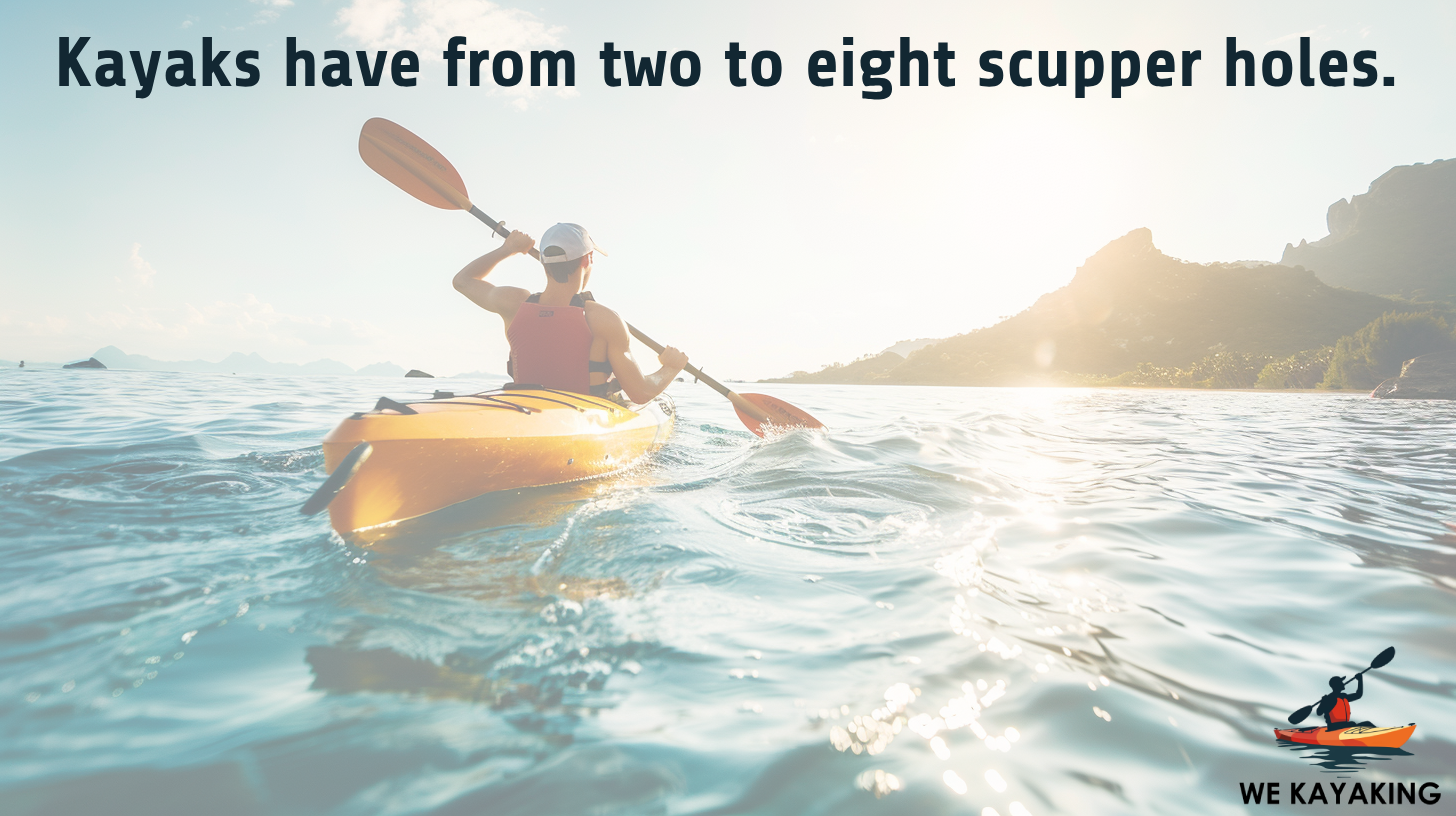 Sit-on-top kayaks have anywhere from two to eight scupper holes, depending on the kayak’s design, size, and purpose. The exact number of scupper holes depend on factors such as the length of the kayak, its width, and the manufacturer’s design choices. Some kayaks have four or more scupper holes, while others have fewer.
Sit-on-top kayaks have anywhere from two to eight scupper holes, depending on the kayak’s design, size, and purpose. The exact number of scupper holes depend on factors such as the length of the kayak, its width, and the manufacturer’s design choices. Some kayaks have four or more scupper holes, while others have fewer.
Kayaks with two scupper holes are often designed with a focus on stability. These kayaks typically have one scupper hole positioned toward the bow (front) and one toward the stern (back). This configuration helps with water drainage while maintaining a stable platform, making them suitable for calm water conditions and beginner-friendly paddling.
Kayaks featuring four or more scupper holes usually prioritize enhanced drainage capabilities. The additional holes are strategically placed across the kayak’s length and width to optimize water expulsion. This configuration is common in kayaks designed for more dynamic water conditions, such as choppy waves or situations where the kayak takes on more water.
What is the size of a scupper hole in a kayak?
The diameter of circular scupper holes ranges from a few centimeters (3-5 cm) to around 20 centimeters or more, depending on the kayak’s size and design. The size of scupper holes in a kayak varies depending on the kayak’s design, manufacturer, and intended use. Scupper holes are designed to allow efficient drainage while preventing excessive water entry.
Sea kayaks and touring kayaks, designed for more advanced paddling and longer distances, have smaller scupper holes or none at all, as they prioritize water tightness and efficient paddling through different water conditions.
Do kayak scupper holes need to be plugged?
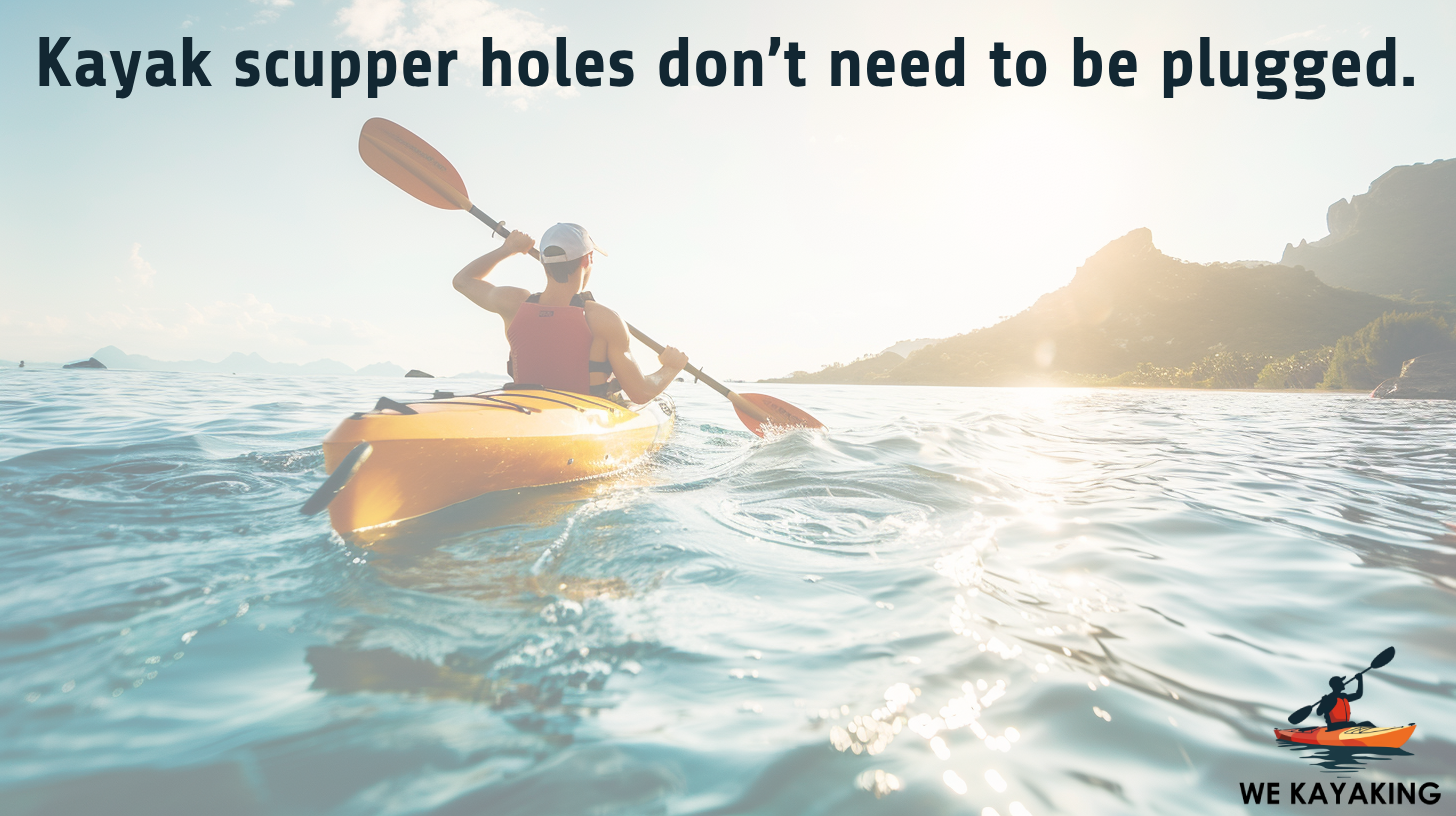 No, kayak scuppers don’t need to be plugged, but the decision of whether kayak scupper holes need to be plugged depends on various factors such as weather conditions, water temperature, and individual preferences.
No, kayak scuppers don’t need to be plugged, but the decision of whether kayak scupper holes need to be plugged depends on various factors such as weather conditions, water temperature, and individual preferences.
In cold weather or choppy waters, some paddlers choose to plug scupper holes to minimize water entry and maintain warmth. However, when efficient drainage is crucial, paddlers often leave scupper holes open. The choice to use scupper hole plugs or not is subjective and situational, allowing paddlers to customize their experience based on comfort and environmental considerations.
Is it possible to increase the amount of scupper holes in a kayak?
No, it is not feasible to increase the number of scupper holes in a sit-on-top kayak. The placement and number of scupper holes are integral parts of a sit-on-top kayak’s design, and they are determined during the manufacturing process. Modifying or adding scupper holes to a kayak compromises its structural integrity, buoyancy, and overall performance.
Additionally, altering the hull of the kayak voids warranties and negatively impacts safety. Paddlers looking for specific features, such as increased drainage, should consider kayaks designed with their desired scupper hole configuration from the outset.
Why do I have holes in my kayak?
If you have holes in your kayak, these are likely intentional features known as scupper holes. Scupper holes are designed openings in the hull of a kayak, especially common in sit-on-top kayak models.
Their primary purpose is to allow water to drain out of the kayak, preventing it from accumulating on the deck. Sit-on-top kayaks are designed with an open cockpit, and scupper holes help ensure that any water that splashes onto the kayak is quickly and efficiently drained away. This self-draining feature contributes to the stability and safety of the kayak, especially in situations where water entry is likely. If you’ve observed openings in the hull of your kayak, they are likely scupper holes designed to enhance your paddling experience by keeping the kayak dry and buoyant.
